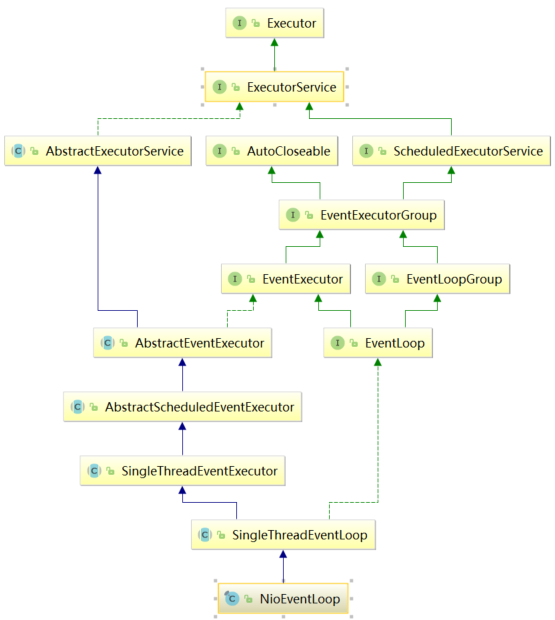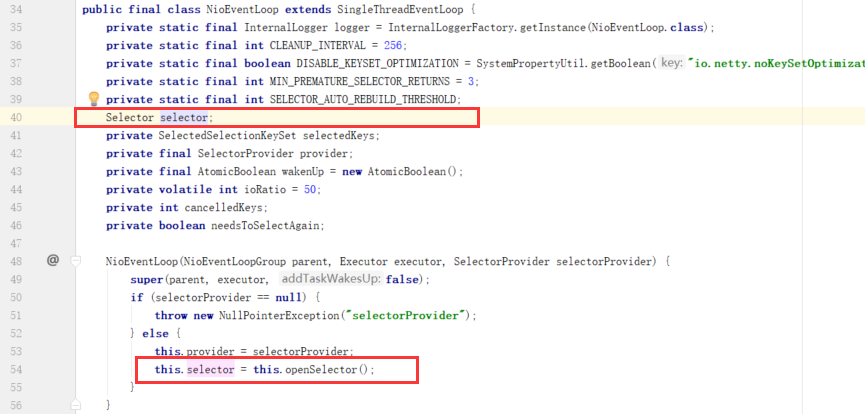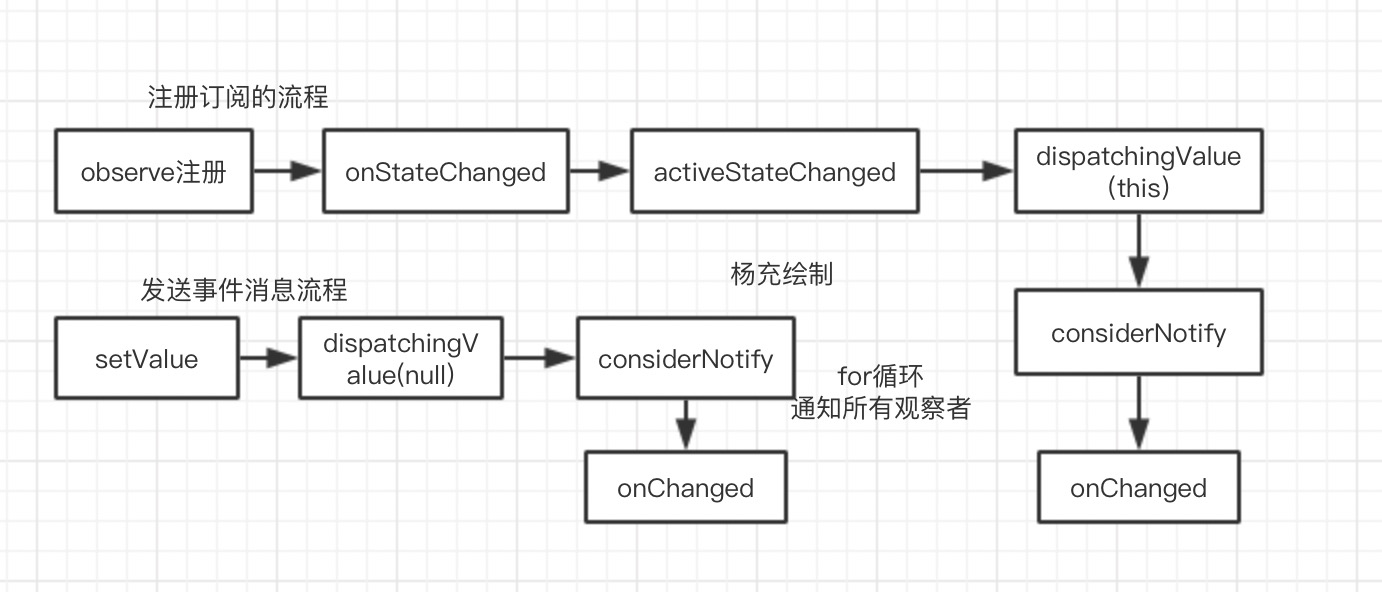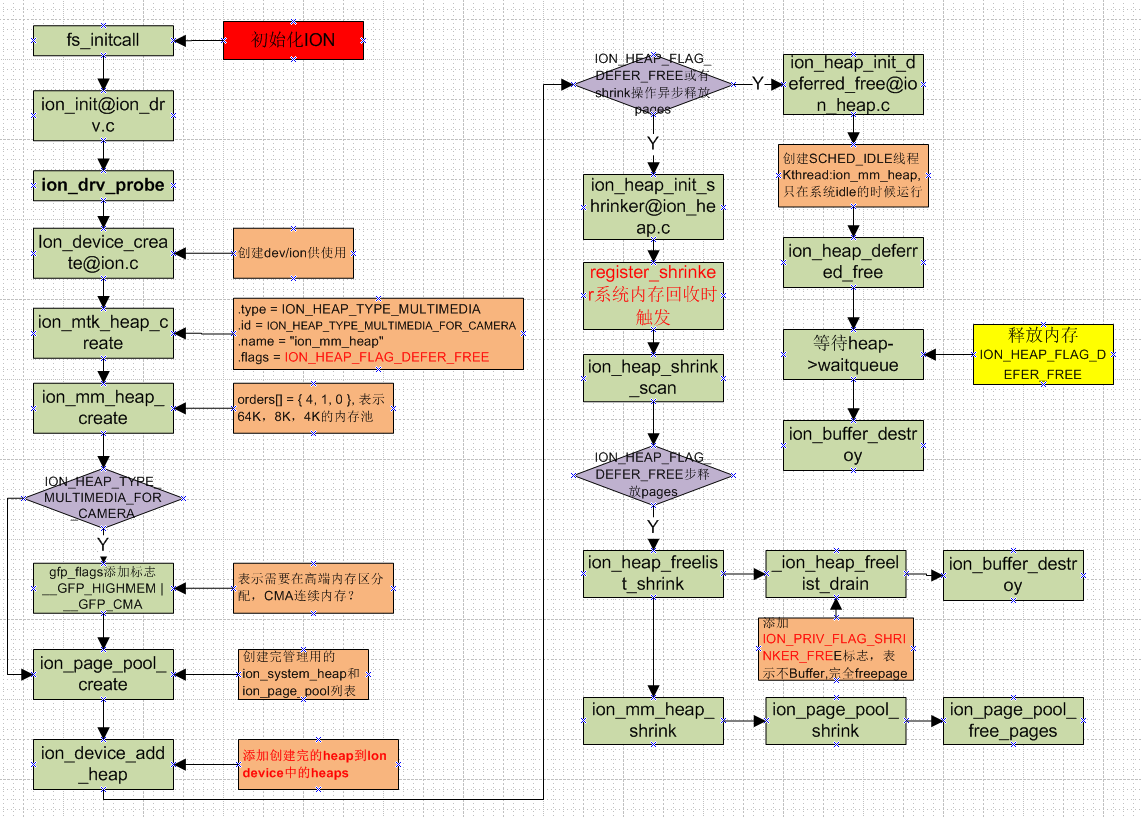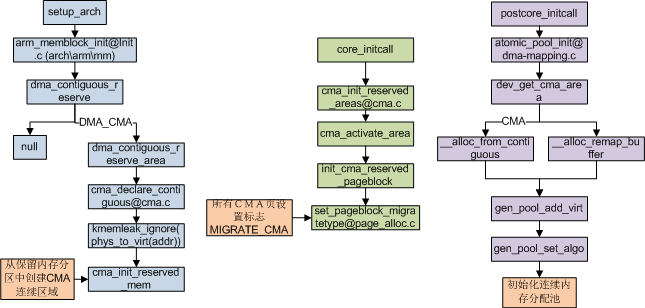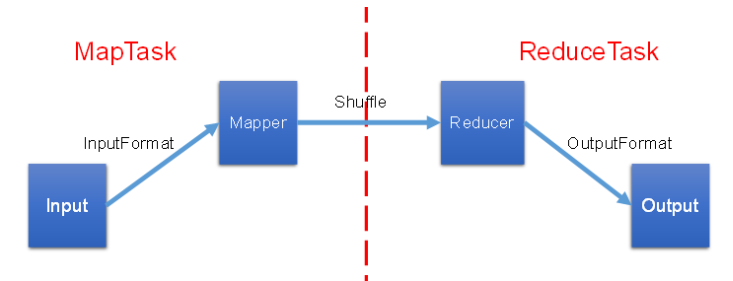Netty5.0的NioEventLoop源碼詳細分析
了解Netty線程模型的小伙伴應該都知道,Netty的線程有兩個NioEventLoopGroup線程池,一個是boss線程池,一個是worker線程池,其中worker線程池的任務如下:
a.異步讀取通訊對端的消息,向ChannelPipeline發出讀事件
b.異步向通訊對端發送消息,調用ChannelPipeline發送消息接口
c.執行系統Task任務
d.執行定時任務
系統Task
通過調用NioEventLoop的execute(Runnable task)方法實現,創建它們的原因是當IO線程和用戶線程都在操作同一個資源時,
會發生鎖競爭的問題,所以將用戶線程封裝為一個Task,交給IO線程串行處理,實現局部無鎖化
定時Task
通過調用NioEventLoop的schedule(Runnable command,long delay,TimeUnit unit)實現,主要用于監控和檢查等定時動作
所以Netty的NioEventLoop并不是一個純粹的I/O線程,它還負責調度執行Task任務
下面看看NioEventLoop的類圖
作為NIO框架的Reactor線程,NioEventLoop需要處理網絡I/O讀寫事件,因此它必須聚合一個多路復用器對象--Selector
selector的初始化方法就是直接調用openSelector()方法
從上圖中可以看到,Netty對Selector的selectedKeys進行了優化,用戶可以通過io.netty.noKeySetOptimization開關決定
是否啟用該優化項,默認不打開優化。如果沒有開啟該優化,則由provider.openSelector()創建并打開selector之后就直接返回,
如果設置了開啟優化,則通過反射機制獲取到selectedKeys和publicSelectedKeys,并將這兩個屬性設為可寫,
然后在使用它們將新創建的selectedKeySet與selector綁定,并將新的selectedKeySet將原JDK中的selectedKeys替換。
上面就是多路復用器Selector的初始化過程,下面研究關鍵的run()方法。
protected void run() {
boolean oldWakenUp = this.wakenUp.getAndSet(false);
try {
if (this.hasTasks()) {
this.selectNow();
} else {
this.select(oldWakenUp);
if (this.wakenUp.get()) {
this.selector.wakeup();
}
}
this.cancelledKeys = 0;
this.needsToSelectAgain = false;
int ioRatio = this.ioRatio;
if (ioRatio == 100) {
this.processSelectedKeys();
this.runAllTasks();
} else {
long ioStartTime = System.nanoTime();
this.processSelectedKeys();
long ioTime = System.nanoTime() - ioStartTime;
this.runAllTasks(ioTime * (long)(100 - ioRatio) / (long)ioRatio);
}
if (this.isShuttingDown()) {
this.closeAll();
if (this.confirmShutdown()) {
this.cleanupAndTerminate(true);
return;
}
}
} catch (Throwable var8) {
logger.warn("Unexpected exception in the selector loop.", var8);
try {
Thread.sleep(1000L);
} catch (InterruptedException var7) {
;
}
}
this.scheduleExecution();
}
boolean oldWakenUp = this.wakenUp.getAndSet(false);通過hasTasks()方法判斷消息隊列當中是否有未處理的任務,如果有則調用selectNow()方法立即進行一次select操作,
看是否有準備就緒的Channel需要處理。
if (this.hasTasks()) {
this.selectNow();
}
void selectNow() throws IOException {
try {
this.selector.selectNow();
} finally {
if (this.wakenUp.get()) {
this.selector.wakeup();
}
}
}
private void select(boolean oldWakenUp) throws IOException {
Selector selector = this.selector;
try {
int selectCnt = 0;
long currentTimeNanos = System.nanoTime();
long selectDeadLineNanos = currentTimeNanos + this.delayNanos(currentTimeNanos);
while(true) {
long timeoutMillis = (selectDeadLineNanos - currentTimeNanos + 500000L) / 1000000L;
if (timeoutMillis <= 0L) {
if (selectCnt == 0) {
selector.selectNow();
selectCnt = 1;
}
break;
}
int selectedKeys = selector.select(timeoutMillis);
++selectCnt;
if (selectedKeys != 0 || oldWakenUp || this.wakenUp.get() || this.hasTasks() || this.hasScheduledTasks()) {
break;
}
if (Thread.interrupted()) {
if (logger.isDebugEnabled()) {
logger.debug("Selector.select() returned prematurely because Thread.currentThread().interrupt() was called. Use NioEventLoop.shutdownGracefully() to shutdown the NioEventLoop.");
}
selectCnt = 1;
break;
}
long time = System.nanoTime();
if (time - TimeUnit.MILLISECONDS.toNanos(timeoutMillis) >= currentTimeNanos) {
selectCnt = 1;
} else if (SELECTOR_AUTO_REBUILD_THRESHOLD > 0 && selectCnt >= SELECTOR_AUTO_REBUILD_THRESHOLD) {
logger.warn("Selector.select() returned prematurely {} times in a row; rebuilding selector.", selectCnt);
this.rebuildSelector();
selector = this.selector;
selector.selectNow();
selectCnt = 1;
break;
}
currentTimeNanos = time;
}
if (selectCnt > 3 && logger.isDebugEnabled()) {
logger.debug("Selector.select() returned prematurely {} times in a row.", selectCnt - 1);
}
} catch (CancelledKeyException var13) {
if (logger.isDebugEnabled()) {
logger.debug(CancelledKeyException.class.getSimpleName() + " raised by a Selector - JDK bug?", var13);
}
}
}
int selectCnt = 0;
long currentTimeNanos = System.nanoTime();
long selectDeadLineNanos = currentTimeNanos + this.delayNanos(currentTimeNanos);
while(true) {
long timeoutMillis = (selectDeadLineNanos - currentTimeNanos + 500000L) / 1000000L;
if (timeoutMillis <= 0L) {
if (selectCnt == 0) {
selector.selectNow();
selectCnt = 1;
}
break;
}
int selectedKeys = selector.select(timeoutMillis);
++selectCnt;Select操作結束之后,需要對結果進行判斷,如果存在下列任意一種情況,則break操作
1.有Channel處于就緒狀態,即selectedKeys != 0 證明有讀寫操作需要jinxing
2.oldWakenUp為true
3.系統或者用戶調用了wakeup操作,喚醒當前的多路復用器
4.消息隊列當中有任務需要執行
if (selectedKeys != 0 || oldWakenUp || this.wakenUp.get() || this.hasTasks() || this.hasScheduledTasks()) {
break;
}1.對Selector的select操作周期進行統計
2.每完成一次空的select操作進行一個計數
3.在某個周期內如果連續發生了N次(默認為512次)空輪詢,說明觸發了JDK NIO的epoll()死循環的bug.
long time = System.nanoTime();
if (time - TimeUnit.MILLISECONDS.toNanos(timeoutMillis) >= currentTimeNanos) {
selectCnt = 1;
} else if (SELECTOR_AUTO_REBUILD_THRESHOLD > 0 && selectCnt >= SELECTOR_AUTO_REBUILD_THRESHOLD) {
logger.warn("Selector.select() returned prematurely {} times in a row; rebuilding selector.", selectCnt);
this.rebuildSelector();
selector = this.selector;
selector.selectNow();
selectCnt = 1;
break;
}監測到Selector處于死循環的狀態下,會通過重建Selector來解決這個問題
public void rebuildSelector() {
if (!this.inEventLoop()) {
this.execute(new Runnable() {
public void run() {
NioEventLoop.this.rebuildSelector();
}
});
} else {
Selector oldSelector = this.selector;
if (oldSelector != null) {
Selector newSelector;
try {
newSelector = this.openSelector();
} catch (Exception var9) {
logger.warn("Failed to create a new Selector.", var9);
return;
}
int nChannels = 0;
label69:
while(true) {
try {
Iterator i$ = oldSelector.keys().iterator();
while(true) {
if (!i$.hasNext()) {
break label69;
}
SelectionKey key = (SelectionKey)i$.next();
Object a = key.attachment();
try {
if (key.isValid() && key.channel().keyFor(newSelector) == null) {
int interestOps = key.interestOps();
key.cancel();
SelectionKey newKey = key.channel().register(newSelector, interestOps, a);
if (a instanceof AbstractNioChannel) {
((AbstractNioChannel)a).selectionKey = newKey;
}
++nChannels;
}
} catch (Exception var11) {
logger.warn("Failed to re-register a Channel to the new Selector.", var11);
if (a instanceof AbstractNioChannel) {
AbstractNioChannel ch = (AbstractNioChannel)a;
ch.unsafe().close(ch.unsafe().voidPromise());
} else {
NioTask<SelectableChannel> task = (NioTask)a;
invokeChannelUnregistered(task, key, var11);
}
}
}
} catch (ConcurrentModificationException var12) {
;
}
}
this.selector = newSelector;
try {
oldSelector.close();
} catch (Throwable var10) {
if (logger.isWarnEnabled()) {
logger.warn("Failed to close the old Selector.", var10);
}
}
logger.info("Migrated " + nChannels + " channel(s) to the new Selector.");
}
}
}
if (!this.inEventLoop()) {
this.execute(new Runnable() {
public void run() {
NioEventLoop.this.rebuildSelector();
}
});
} 通過銷毀舊的、有問題的多路復用器,使用新建的Selector,就可以解決空輪詢Selector導致的bug。
如果輪詢到了處于就緒狀態的SocketChannel,則需要處理網絡I/O事件
this.cancelledKeys = 0;
this.needsToSelectAgain = false;
int ioRatio = this.ioRatio;
if (ioRatio == 100) {
this.processSelectedKeys();
this.runAllTasks();
} else {
long ioStartTime = System.nanoTime();
this.processSelectedKeys();
long ioTime = System.nanoTime() - ioStartTime;
this.runAllTasks(ioTime * (long)(100 - ioRatio) / (long)ioRatio);
}
private void processSelectedKeys() {
if (this.selectedKeys != null) {
this.processSelectedKeysOptimized(this.selectedKeys.flip());
} else {
this.processSelectedKeysPlain(this.selector.selectedKeys());
}
}
private void processSelectedKeysPlain(Set<SelectionKey> selectedKeys) {
if (!selectedKeys.isEmpty()) {
Iterator i = selectedKeys.iterator();
while(true) {
SelectionKey k = (SelectionKey)i.next();
Object a = k.attachment();
i.remove();
if (a instanceof AbstractNioChannel) {
processSelectedKey(k, (AbstractNioChannel)a);
} else {
NioTask<SelectableChannel> task = (NioTask)a;
processSelectedKey(k, task);
}
if (!i.hasNext()) {
break;
}
if (this.needsToSelectAgain) {
this.selectAgain();
selectedKeys = this.selector.selectedKeys();
if (selectedKeys.isEmpty()) {
break;
}
i = selectedKeys.iterator();
}
}
}
}
if (!selectedKeys.isEmpty()) {
Iterator i = selectedKeys.iterator();
while(true) {
SelectionKey k = (SelectionKey)i.next();
Object a = k.attachment();
i.remove();
if (a instanceof AbstractNioChannel) {
processSelectedKey(k, (AbstractNioChannel)a);
} else {
NioTask<SelectableChannel> task = (NioTask)a;
processSelectedKey(k, task);
}
NioUnsafe unsafe = ch.unsafe();
if (!k.isValid()) {
unsafe.close(unsafe.voidPromise());
}
else {
try {
int readyOps = k.readyOps();
if ((readyOps & 17) != 0 || readyOps == 0) {
unsafe.read();
if (!ch.isOpen()) {
return;
}
}
if ((readyOps & 4) != 0) {
ch.unsafe().forceFlush();
}
if ((readyOps & 8) != 0) {
int ops = k.interestOps();
ops &= -9;
k.interestOps(ops);
unsafe.finishConnect();
}
} catch (CancelledKeyException var5) {
unsafe.close(unsafe.voidPromise());
}
}
protected int doReadMessages(List<Object> buf) throws Exception {
SocketChannel ch = this.javaChannel().accept();
try {
if (ch != null) {
buf.add(new NioSocketChannel(this, ch));
return 1;
}
} catch (Throwable var6) {
logger.warn("Failed to create a new channel from an accepted socket.", var6);
try {
ch.close();
} catch (Throwable var5) {
logger.warn("Failed to close a socket.", var5);
}
}
return 0;
}
protected int doReadBytes(ByteBuf byteBuf) throws Exception {
return byteBuf.writeBytes(this.javaChannel(), byteBuf.writableBytes());
}
if ((readyOps & 4) != 0) {
ch.unsafe().forceFlush();
} if ((readyOps & 8) != 0) {
int ops = k.interestOps();
ops &= -9;
k.interestOps(ops);
unsafe.finishConnect();
}處理完I/O事件之后,NioEventLoop需要執行非I/O操作的系統Task和定時任務,由于NioEventLoop需要同時處理I/O事件和
非I/O任務,為了保證兩者都能得到足夠的CPU時間被執行,Netty提供了I/O比例供用戶定制。如果I/O操作多于定時任務和Task,
則可以將I/O比例跳大,反之則調小,默認為50%
long ioTime = System.nanoTime() - ioStartTime;
this.runAllTasks(ioTime * (long)(100 - ioRatio) / (long)ioRatio);
protected boolean runAllTasks(long timeoutNanos) {
this.fetchFromScheduledTaskQueue();
Runnable task = this.pollTask();
if (task == null) {
return false;
} else {
long deadline = ScheduledFutureTask.nanoTime() + timeoutNanos;
long runTasks = 0L;
long lastExecutionTime;
while(true) {
try {
task.run();
} catch (Throwable var11) {
logger.warn("A task raised an exception.", var11);
}
++runTasks;
if ((runTasks & 63L) == 0L) {
lastExecutionTime = ScheduledFutureTask.nanoTime();
if (lastExecutionTime >= deadline) {
break;
}
}
task = this.pollTask();
if (task == null) {
lastExecutionTime = ScheduledFutureTask.nanoTime();
break;
}
}
this.lastExecutionTime = lastExecutionTime;
return true;
}
}
this.fetchFromScheduledTaskQueue();
Runnable task = this.pollTask();
if (task == null) {
return false;
} 如果有,則循環執行定時任務,并且根據時間戳來判斷操作是否已經超過了分配給非I/O操作的超時時間,超過則退出,
默認每經過64次循環則進行一次上述判斷。防止由于非I/O任務過多導致I/O操作被長時間阻塞
while(true) {
try {
task.run();
} catch (Throwable var11) {
logger.warn("A task raised an exception.", var11);
}
++runTasks;
if ((runTasks & 63L) == 0L) {
lastExecutionTime = ScheduledFutureTask.nanoTime();
if (lastExecutionTime >= deadline) {
break;
}
}
task = this.pollTask();
if (task == null) {
lastExecutionTime = ScheduledFutureTask.nanoTime();
break;
}
}
if (this.isShuttingDown()) {
this.closeAll();
if (this.confirmShutdown()) {
this.cleanupAndTerminate(true);
return;
}
}NioEventLoop的源碼分析到此結束,歡迎大家一起討論。
智能推薦
LiveData詳細分析
目錄介紹 01.LiveData是什么東西 02.使用LiveData的優勢 03.使用LiveData的步驟 04.簡單使用LiveData 05.observe()和observerForever() 06.LiveData原理介紹 07.observe訂閱源碼分析 08.setValue發送源碼分析 09.observeForever源碼 10.LiveData源碼總結 00.使用LiveD...
Lifecycle詳細分析
Lifecycle源碼分析 目錄介紹 01.Lifecycle的作用是什么 02.Lifecycle的簡單使用 03.Lifecycle的使用場景 04.如何實現生命周期感知 05.注解方法如何被調用 06.addObserver調用分析 07.知識點梳理和總結一下 00.使用AAC實現bus事件總線 利用LiveData實現事件總線,替代EventBus。充分利用了生命周期感知功能,可以在act...
ConcurrentHashmap 詳細分析
詳盡的分析 JDK8 后的ConcurrentHashmap,思路分析輔以源碼走讀,徹底讀懂 ConcurrentHashmap。 簡介 放入數據 容器元素總數更新 容器擴容 協助擴容 遍歷 簡介 在從 JDK8 開始,為了提高并發度,ConcurrentHashMap的源碼進行了很大的調整。在 JDK7 中,采用的是分段鎖的思路。簡單的說,就是ConcurrentHashMap是由多個HashM...
ION詳細分析
參考: http://blog.csdn.net/armwind/article/details/53454251?locationNum=2&fps=1 代碼路徑 驅動代碼: kernel-3.18/drivers/staging/android/ion Native lib代碼: system\core\libion & vendor/mediatek/proprietary/...
CMA 詳細分析
關于CMA的config @LINUX/android/kernel/arch/arm/configs/msm8909_defconfig CONFIG_CMA=y 已經打開 # CONFIG_CMA_DEBUG is not set # # Default contiguous memory area size: # CONFIG_CMA_SIZE_MBYTES=8 //兩個配對定義 CONFI...
猜你喜歡
MapReduce詳細分析
一、MapReduce概述 1、定義 MapReduce核心功能是將用戶編寫的業務邏輯代碼和自帶默認組件整合成一個完整的分布式運算程序,并發運行在一個Hadoop集群 上。 2、MR進程 一個完整的MapR educe程序在分布式運行時有三類實例進程: **Mr AppMaster:**負責整個程序的過程調度及狀態協調。 MapTask:負責Map階段的整個數據處理流程。 ReduceTask:負...
freemarker + ItextRender 根據模板生成PDF文件
1. 制作模板 2. 獲取模板,并將所獲取的數據加載生成html文件 2. 生成PDF文件 其中由兩個地方需要注意,都是關于獲取文件路徑的問題,由于項目部署的時候是打包成jar包形式,所以在開發過程中時直接安照傳統的獲取方法沒有一點文件,但是當打包后部署,總是出錯。于是參考網上文章,先將文件讀出來到項目的臨時目錄下,然后再按正常方式加載該臨時文件; 還有一個問題至今沒有解決,就是關于生成PDF文件...
電腦空間不夠了?教你一個小秒招快速清理 Docker 占用的磁盤空間!
Docker 很占用空間,每當我們運行容器、拉取鏡像、部署應用、構建自己的鏡像時,我們的磁盤空間會被大量占用。 如果你也被這個問題所困擾,咱們就一起看一下 Docker 是如何使用磁盤空間的,以及如何回收。 docker 占用的空間可以通過下面的命令查看: TYPE 列出了docker 使用磁盤的 4 種類型: Images:所有鏡像占用的空間,包括拉取下來的鏡像,和本地構建的。 Con...
requests實現全自動PPT模板
http://www.1ppt.com/moban/ 可以免費的下載PPT模板,當然如果要人工一個個下,還是挺麻煩的,我們可以利用requests輕松下載 訪問這個主頁,我們可以看到下面的樣式 點每一個PPT模板的圖片,我們可以進入到詳細的信息頁面,翻到下面,我們可以看到對應的下載地址 點擊這個下載的按鈕,我們便可以下載對應的PPT壓縮包 那我們就開始做吧 首先,查看網頁的源代碼,我們可以看到每一...
